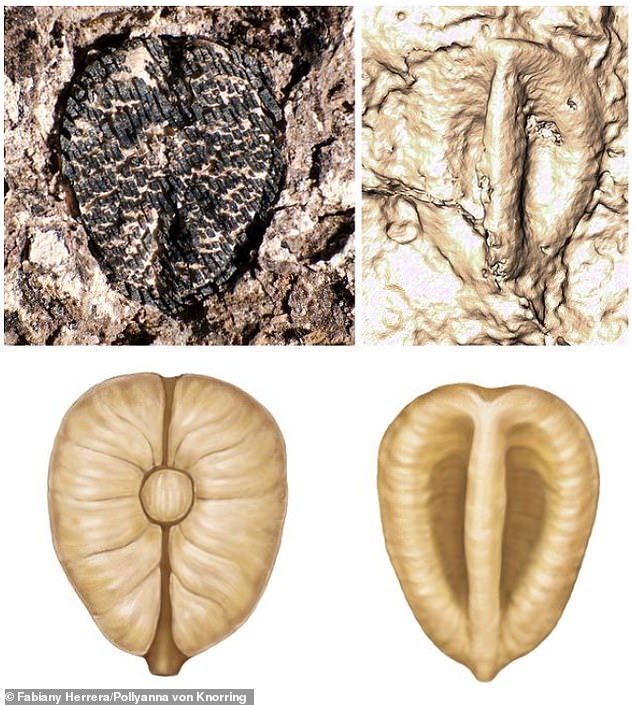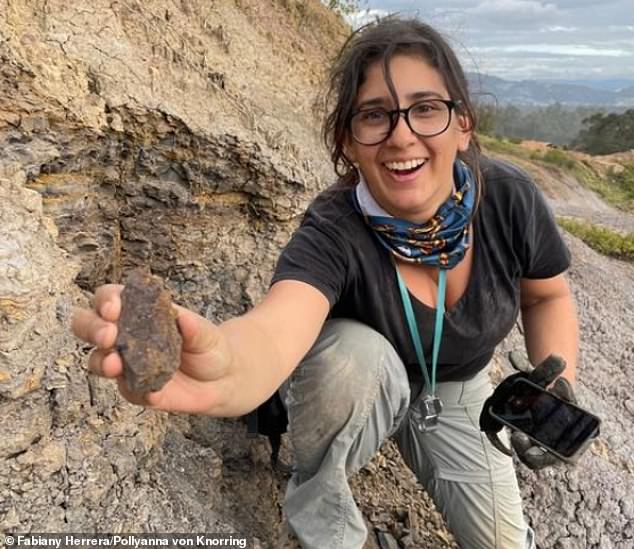Enjoy a glass of wine? Thank the asteroid that killed the dinosaurs! Scientists say the extinction of the ancient reptiles paved the way for grapes to spread
- Without dinosaurs trampling on trees, vines like grapes flourished
- READ MORE: Asteroid wiped out the dinosaurs 66 million years ago
The next time you open a bottle of wine, raise a glass to the dinosaurs.
That’s because their extinction, caused by a massive asteroid, paved the way for the spread of grapes, a new study finds.
The research shows that the extinction of prehistoric reptiles allowed more trees to grow, which in turn meant more grapes could grow.
A team from the Field Museum in Chicago has discovered fossil grape seeds dating back 60 to 19 million years in Colombia, Panama and Peru.
One of these species represents the earliest known example of a plant in the grape family in the Western Hemisphere. The seeds show how the grape family evolved.
It has long been known that the dinosaurs were wiped out by the Chicxulub impact – a crashing asteroid or comet that slammed into a shallow sea in what is now Mexico’s Yucatán Peninsula about 66 million years ago (archive photo)
About 66 million years ago, an asteroid larger than Mount Everest hit Earth, killing three-quarters of all life on Earth, including the dinosaurs.
The aftermath allowed small mammals and some birds to thrive, and laid the foundation for grapes to flourish.
Fabiany Herrera, lead author of the study, said: ‘These are the oldest grapes ever found in this part of the world, and they are several million years younger than the oldest grapes ever found on the other side of the planet.
‘This discovery is important because it shows that grapes only really spread around the world after the extinction of the dinosaurs.’

Lithouva from Colombia is the oldest fossil grape in the Western Hemisphere, about 60 million years old. Top image shows fossil accompanied by CT scan reconstruction. Bottom image shows artist’s reconstruction
According to the researchers, it is no coincidence that grapes first appeared in the fossil record around the same time as the Chicxulub asteroid hit Earth.
They suggest that the disappearance of the dinosaurs may have contributed to the change in forests, as large species likely knocked over trees as they roamed.
Without large dinosaurs to prune them, the forests became increasingly crowded with layers of trees, allowing climbing plants such as grapes to grow.
According to the researchers, the diversification of birds and mammals in the years following the mass extinction may also have played a role in the spread of grape seeds.

Mónica Carvalho, co-author of the paper, holds the fossil of the oldest grape seed found in the Western Hemisphere
“We always think about the animals, the dinosaurs, because they were the hardest hit, but the mass extinction also had a huge impact on plants,” Dr. Herrera said.
‘The forest reset itself, changing the composition of the plants.
‘In the fossil record around this time, we see more and more plants that use vines to climb trees, such as grapes.’
The findings were published in the journal Natural plants.

